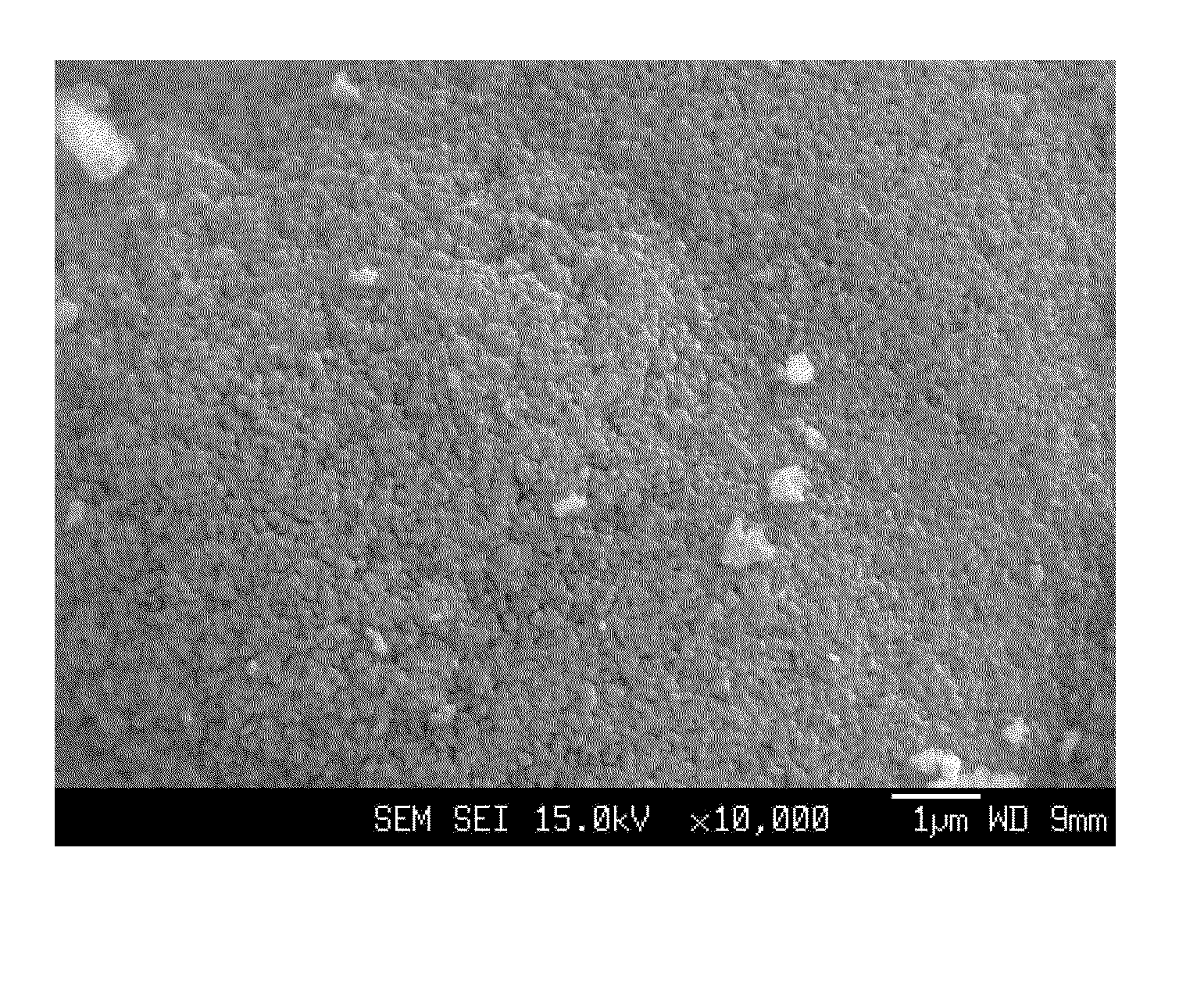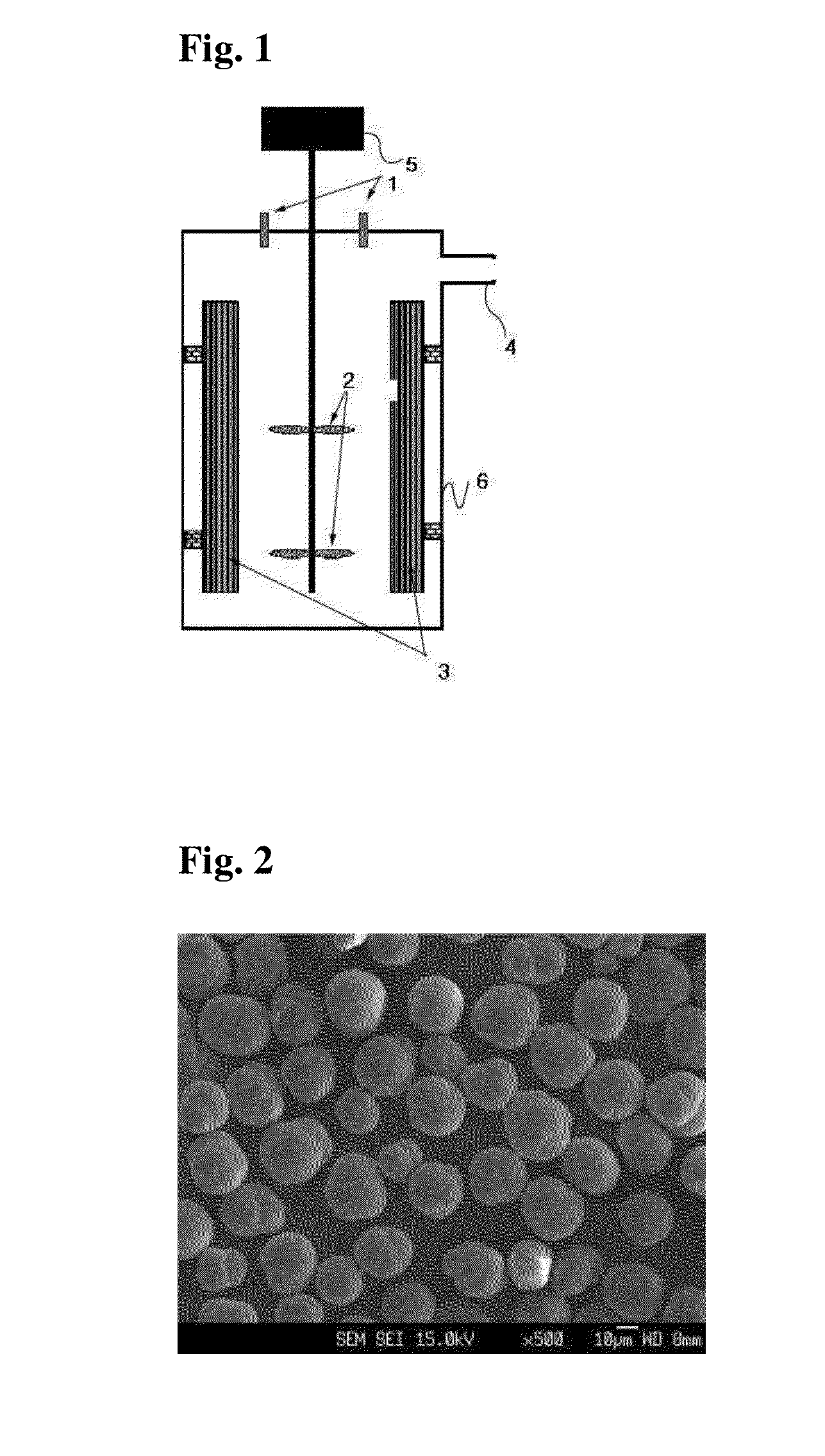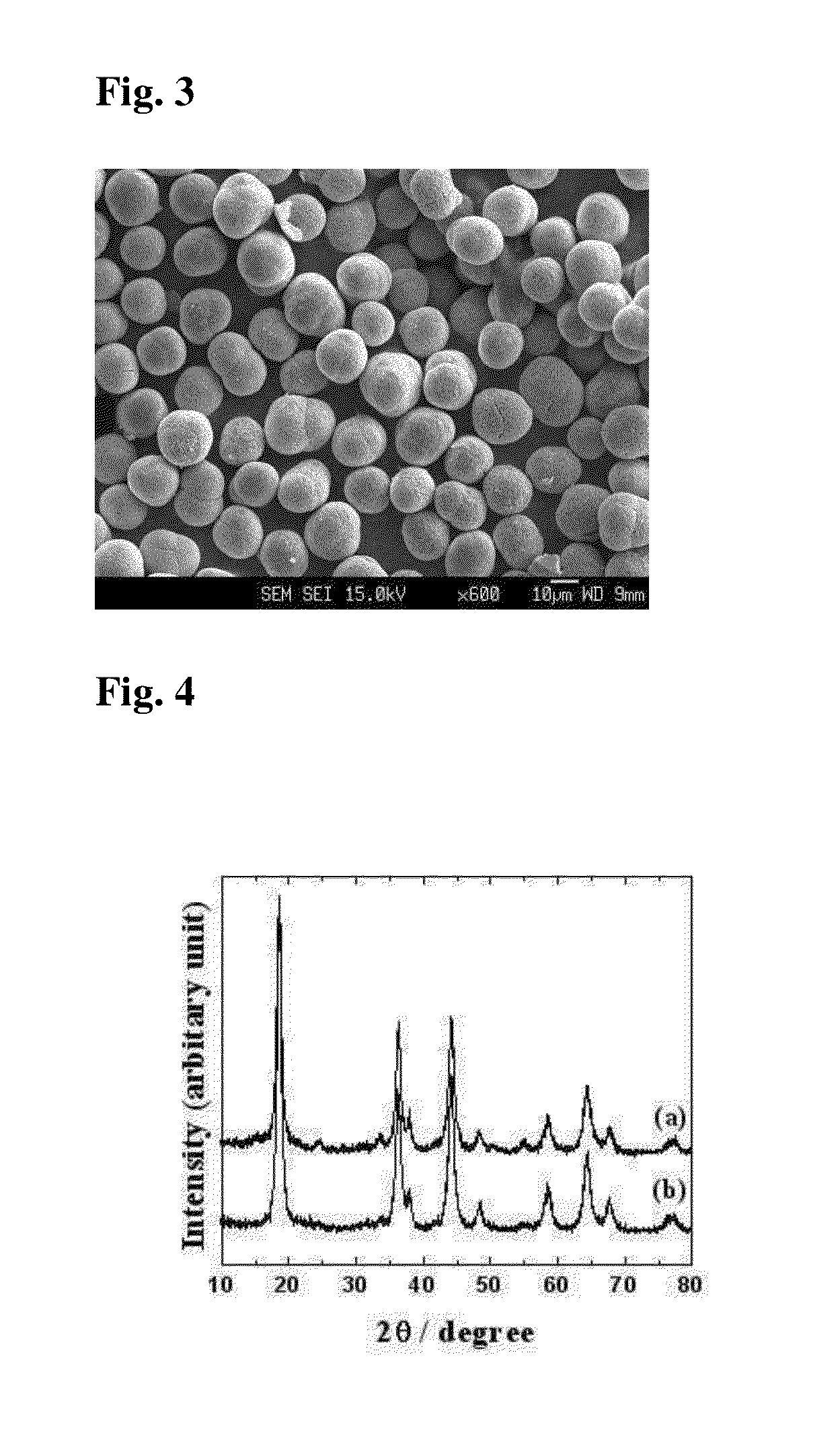3v class spinel complex oxides as cathode active materials for lithium secondary batteries, method for preparing the same by carbonate coprecipitation, and lithium secondary batteries using the same
a lithium secondary battery and complex oxide technology, applied in the direction of nickel compounds, cell components, sustainable manufacturing/processing, etc., can solve the problems of high temperature and long preparation time, difficult control of particle size to a constant level, and solid phase, and achieve superior cycle characteristics, uniform particle size, and high capacity characteristics
- Summary
- Abstract
- Description
- Claims
- Application Information
AI Technical Summary
Benefits of technology
Problems solved by technology
Method used
Image
Examples
example 1
[0052]Two liters of distilled water was put in a reactor (capacity: 4 L, rotation speed of motor: 1,000 rpm or more), and then carbonic acid gas was purged into the reactor while bubbling at a rate of one liter / minute so as to be dissolved in the distilled water, thereby removing dissolved oxygen and replenishing carbonate ions. Stirring was conducted at 1,000 rpm while keeping the temperature of the reactor at 60° C.
[0053]Eight liters of a 2M aqueous metal solution containing nickel sulfate and manganese sulfate in a molar ratio of 0.25:0.75 and eight liters of a 0.2M aqueous ammonia solution were continuously fed into the reactor at rates of 0.5 and 0.67 liters / hour, respectively. Eight liters of a 2M aqueous sodium carbonate solution was fed into the reactor to adjust the pH to 7.5.
[0054]At this time, the rotation speed of an impeller was set to 1,000 rpm. The flow rate of the solution was controlled so that the average residence time in the reactor was about 3 hours. After the r...
example 2
[0058]The spinel oxide Li1.06Ni0.5Mn1.5O4 was prepared in the same manner as in Example 1, except that the precursor and lithium hydroxide were mixed in a molar ratio of 1:1.06, heated at a rate of 1° C. / min., followed by secondary calcining at 800° C. for 5 hours.
example 3
[0059]The spinel oxide Li0.6[Ni0.5Mn1.5]O3.95S0.05 powder was prepared in the same manner as in Example 1, except that the precursor in the form of a metal complex oxide, lithium hydroxide and sulfur were mixed in a molar ratio of 1:1.06:0.05, heated at a rate of 1° C. / min., followed by secondary calcining at 500° C. for 5 hours. A cathode for a lithium secondary battery was produced using the spinel oxide, and a coin-type battery comprising the cathode was fabricated.
[0060]FIG. 3 is a FE-SEM image of the spinel oxide (Li1.06[Ni0.5Mn1.5]O4−ySy (y=0.05)) obtained after secondary calcining at 500° C.
[0061]FIG. 4b shows X-ray diffraction patterns of the lithium complex oxide powder partly replaced with sulfur. From the patterns of the lithium complex oxide powder, it was confirmed that NiO impurities are present at 15° (2θ) and the powder has a spinel cubic structure belonging to the space group Fd-3m.
PUM
| Property | Measurement | Unit |
|---|---|---|
| particle diameter | aaaaa | aaaaa |
| particle diameter | aaaaa | aaaaa |
| voltages | aaaaa | aaaaa |
Abstract
Description
Claims
Application Information
 Login to View More
Login to View More - R&D
- Intellectual Property
- Life Sciences
- Materials
- Tech Scout
- Unparalleled Data Quality
- Higher Quality Content
- 60% Fewer Hallucinations
Browse by: Latest US Patents, China's latest patents, Technical Efficacy Thesaurus, Application Domain, Technology Topic, Popular Technical Reports.
© 2025 PatSnap. All rights reserved.Legal|Privacy policy|Modern Slavery Act Transparency Statement|Sitemap|About US| Contact US: help@patsnap.com



